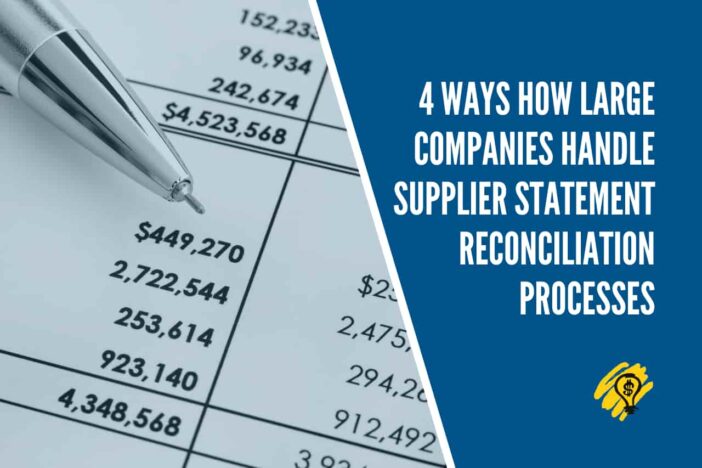Businesses require to correctly match up the accounts payables and receivables with respect to different domains of business transactions. Sometimes accountants or tax officials might find mismatches in payment information between the ledgers of two companies that deal with each other.
The type of error could be a discrepancy caused by human error or even short-term or long-term financial fraud. Such errors will not adjust on their own and call for a financial process known as supplier statement reconciliation.
For instance, let’s say XYZ company records a bill of $20,000 while the supplier AP reflects only $17,360. In this case, the respective reconciliation document will look as follows.
Firstly, both parties are required to accede to the initial balance, verify the articles mentioned in the supplier statement reconciliation, and then make the following changes.
- Missing recent payment on the supplier side: $640.
- Credit mentioned in the AP: <$1000.
- The total value of invoices entered on the AP ledger: <$1000.
Supplier Invoice Comparison:
- Initial Opening Balance: $20,000
- Payment in transit: $640
- Lack of Invoice recorded: $1000
- Lack of Credit Information: $1000
- AP balance: $17,360
The Process
Supplier statement reconciliation is generally a 4-step process. Firstly, it begins with the agreement of the correctly stipulated balance and time stamps of the AP/AR entries. Furthermore, the said transactions are assigned followed by the adjustments of the errors detected.
#1. Verifying Supplier Invoices
Firstly, finance officials will verify if the initial balance of the supplier invoice corresponds with the amount mentioned on the AP. Once this part is cleared, parties come to an agreement where the supplier invoices are tallied up.
#2. Check out the entries
Once agreed upon, parties are required to verify all entries displayed in the supplier and AP account. They can now be deleted from the whole process.
#3. Offset Updated Information
Now to move forward clearly with the updated information, all the transactions will be
equalized within the AP/AR accounts and the final invoice.
#4. Adjust the Differences
The outstanding articles are either invoice variables or payment variables that weren’t in the AP. They will be verified via reconciliation in order to establish the erroneous claims and required updates.
Now performing this with a multitude of supplier invoices every month can get hectic. Despite the benefits and importance of this task, experts are required to opt for different methods to finish the reconciliation on time. Let’s look at some of those methods.
Outsourcing
If you learn that your in-house team is insufficient to take on the heft of the reconciliation process, you must consider finding a seasoned consulting firm or expert to whom you can outsource the AP adjustment processes. They can handle all variables with an efficient AP adjustment format.
Leveraging Latest Technologies
As we discussed earlier, accounting processes such as supplier statement reconciliation are time-consuming and hectic. Today, there are several IT firms that build smart software solutions that can ease the whole process by helping businesses resolve related issues in an efficient and timely fashion. Automation solutions such as Statement Matching help companies stay error-free and efficient while performing such financial operations.
Using Specific templates/formats
Companies may receive supplier declarations in various styles and formats. It is important to establish a preset arrangement that either party can adhere to such as a stipulated accounts payable adjustment format. This way, either party is well-versed in the way information is laid out and can better comprehend and execute the tasks required to mitigate errors that call for supplier statement reconciliation.
Conclusion
It is safe to say that supplier reconciliation automation guarantees a full audit testing that otherwise takes up a lot of manpower and hours to complete. Also, the accuracy levels are far better than manual processes as there is no room for human error. It also helps with the AP account and invoice comparisons and efficiently flags discrepancies and erroneous transactions.



